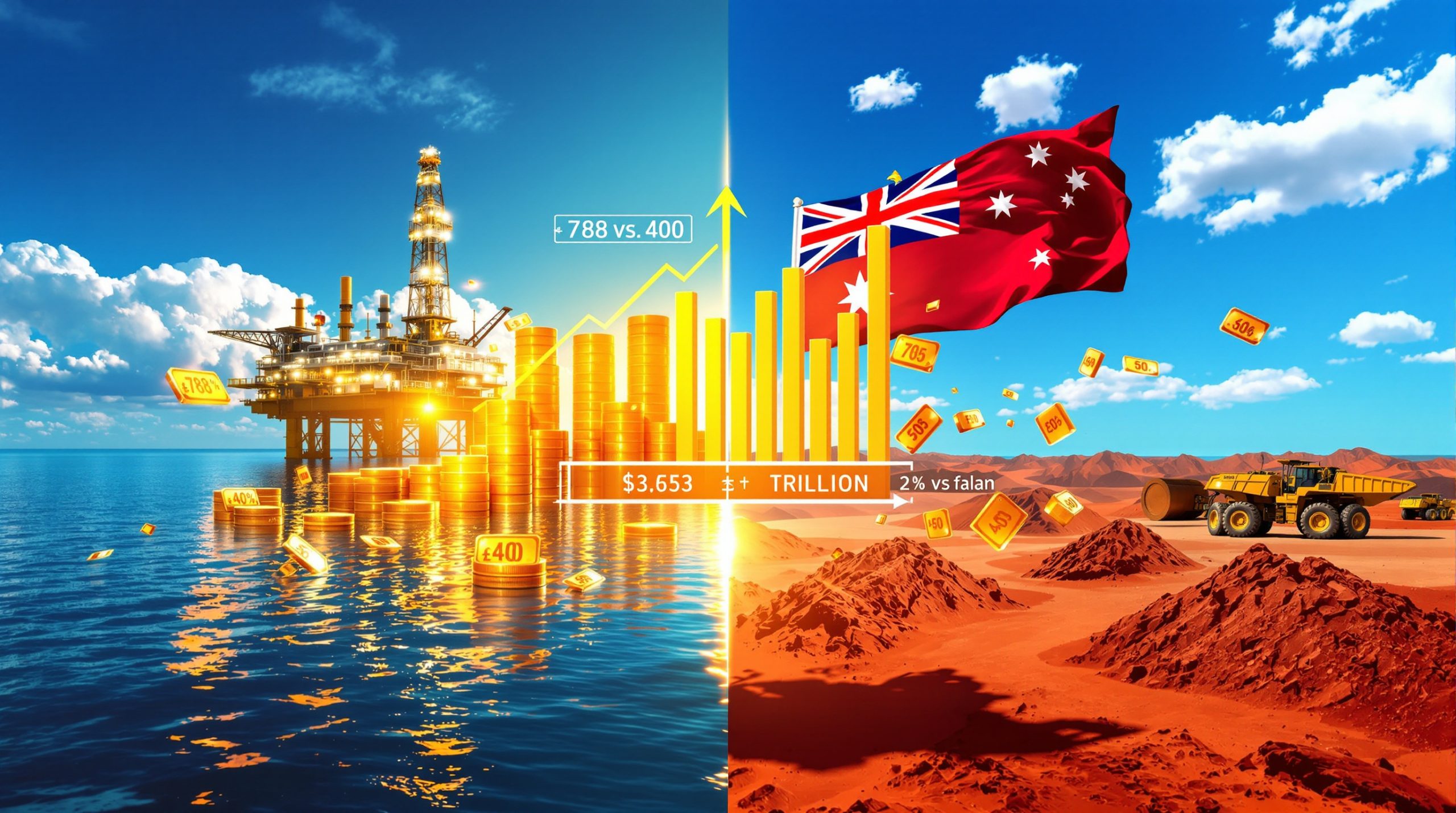Understanding the International Minerals Agency Proposal
A coalition of investors representing $18 trillion in assets has called for establishing an International Minerals Agency (IMA) to address critical gaps in global mineral governance. This proposed agency would function similarly to the International Energy Agency, providing independent oversight of mineral markets worldwide. The creation of International Minerals Agency represents a transformative approach to mineral resource management, offering centralised monitoring capabilities that currently do not exist.
Unlike industry associations or regional bodies, the proposed IMA would maintain independent oversight authority across global mineral supply chains. The agency would focus on three core functions: monitoring global mineral supply and demand patterns, tracking illegal mineral flows across international borders, and providing comprehensive sustainability data on mining company performance.
This centralised approach addresses the fragmented regulatory landscape that currently characterises international mineral markets. Furthermore, it aligns with evolving critical minerals strategy frameworks that emphasise strategic resource security.
Why Global Investors Are Demanding Mining Reform
The Global Investor Commission on Mining 2030 includes major institutional players: PIMCO, ING, Legal & General, Allianz Investment Management, Church of England Pension Fund, and Royal London Asset Management. Their collective influence spans pension funds, asset managers, and insurance giants across multiple continents.
These investors launched their proposal in São Paulo, Brazil, strategically timing the announcement ahead of United Nations climate negotiations. The initiative gained significant political attention, with the investor group meeting directly with Brazilian President Luiz Inácio Lula da Silva.
Peter Kindt, global head transition accelerator at ING, emphasised that the initiative offers a roadmap for investors to unlock value by promoting sustainability and improving public perception of mining operations. He noted that achieving these goals requires multi-stakeholder collaboration and new governance structures like an International Minerals Agency.
The scale of financial backing demonstrates serious institutional concern about current mineral resource management inadequacies. The $18 trillion in collective assets represents unprecedented investor alignment around mining sector reform, signalling that traditional approaches to mineral governance no longer meet institutional investment standards.
Current market gaps include the absence of centralised mineral supply data, lack of standardised sustainability metrics across mining operations, limited visibility into illegal mining activities, and fragmented regulatory frameworks across different jurisdictions. These deficiencies create material risks for long-term portfolio planning and Environmental, Social, and Governance (ESG) compliance.
Consequently, investors are increasingly focused on critical minerals and energy security considerations within their broader portfolio strategies.
Operational Framework Based on Energy Agency Model
The International Energy Agency, established in 1974, provides the organisational blueprint for the proposed minerals agency. The IEA operates as an autonomous intergovernmental organisation under the Organisation for Economic Cooperation and Development (OECD), maintaining 31 member countries as of 2024.
The IEA's core functions include comprehensive energy data collection, policy analysis, and emergency response coordination for oil supply disruptions. Its real-time data capabilities maintain extensive databases on energy supply, demand, and market trends across member and non-member nations.
However, adapting the IEA model to mineral markets presents unique challenges. Minerals face different constraints than energy markets, including physical commodity storage limitations, geographic concentration of mineral deposits, and distinct legal frameworks for extraction operations.
The proposed IMA operational framework would establish:
- Real-time supply and demand monitoring systems across global mineral markets
- Illegal flow detection and reporting mechanisms with international enforcement coordination
- Company sustainability performance databases with standardised metrics
- Market intervention capabilities during critical supply disruptions
During the 2022 oil supply crisis following Russia's invasion of Ukraine, the IEA successfully coordinated strategic petroleum reserve releases among member countries. This emergency response capability demonstrates the potential effectiveness of international resource coordination, though no equivalent mineral emergency response protocol currently exists.
For instance, those following an investing guide 2025 should consider how such coordination mechanisms might affect portfolio allocation decisions.
Critical Supply Chain Transparency Problems
Current mineral supply chains operate with significant transparency deficits that create risks for investors, consumers, and producing communities. The European Union's Conflict Minerals Regulation (EU Regulation 2017/821) requires due diligence reporting, but enforcement remains fragmented across different jurisdictions and mineral types.
Since the regulation's implementation in January 2021, compliance rates vary significantly by mineral type and source country. No centralised global database exists for tracking illegal mineral flows comparable to the Convention on International Trade in Endangered Species (CITES) system for wildlife protection.
The United Nations Office on Drugs and Crime has documented extensive illegal mining operations across sub-Saharan Africa, Southeast Asia, and Latin America. However, global coordination on tracking and reporting these activities remains limited, creating opportunities for illicit materials to enter legitimate supply chains.
In addition, investors are calling for the creation of stronger international oversight mechanisms to address these transparency gaps.
Sustainability Accountability Gaps
Environmental standards vary dramatically across mining jurisdictions. Australia's Environment Protection and Biodiversity Conservation Act differs substantially from Peru's environmental regulations and China's environmental compliance frameworks. This fragmentation makes consistent environmental impact assessment impossible across global operations.
ESG reporting frameworks including GRI, SASB, and TCFD standards remain non-mandatory and unevenly adopted across the mining sector. The International Council on Mining and Metals (ICMM) operates voluntary standards, but participation is not universal and enforcement mechanisms are limited.
Social impact monitoring presents additional challenges. Community benefit agreements vary significantly by country with no standardised international framework for measuring or reporting social outcomes from mining operations.
Furthermore, understanding the broader global mining landscape becomes crucial when evaluating these accountability gaps across different regions.
Strategic Mineral Coverage and Market Dynamics
While the creation of International Minerals Agency proposal does not specify which minerals would fall under oversight, the agency would likely focus on materials critical to energy transition and strategic security interests.
Critical Battery Minerals
Lithium faces supply concentration risks with Australia, Chile, and Argentina dominating production. Global demand projections show significant growth through the 2030s driven by electric vehicle battery production. Current supply chains operate under different regulatory regimes across the "Lithium Triangle," creating inconsistent environmental and social impact monitoring.
Cobalt presents the most acute governance challenges, with the Democratic Republic of Congo accounting for approximately 70% of global production. Significant conflict mineral concerns persist in DRC operations, documented in multiple UN Security Council reports on mineral conflicts in the region.
Rare earth elements demonstrate extreme supply concentration, with China controlling approximately 60-70% of global processing capacity. The 17 rare earth elements essential to renewable energy technology, defence systems, and electronics create geopolitical supply vulnerabilities.
Infrastructure and Industrial Minerals
Copper demand faces substantial increases due to renewable energy infrastructure requirements. Major producers including Chile, Peru, China, and the United States operate under different environmental and labour standards, complicating supply chain management for consuming industries.
Nickel supply chains centre in Indonesia, the Philippines, and Russia, with battery applications driving unprecedented demand growth. Environmental concerns regarding laterite mining in Southeast Asia highlight the need for coordinated international oversight.
Graphite production concentrates in China, Brazil, and Canada, with natural graphite essential for battery anode production. Synthetic graphite production requires significant energy inputs, creating additional environmental considerations.
These dynamics align with broader industry innovation trends that emphasise technological advancement and sustainable practices.
Implementation Timeline and Political Realities
The creation of International Minerals Agency faces substantial developmental hurdles before becoming operational. No specific timeline exists for implementation phases or full operational capacity deployment.
Establishing international agencies requires extensive multilateral treaty negotiations, funding mechanism development, and political consensus among major producing and consuming nations. Historical precedents suggest complex timelines:
- The International Energy Agency required several years from initial proposal to operational status following the 1973 oil crisis
- The World Trade Organisation establishment process extended over multiple years before achieving operational capacity in 1995
- The International Maritime Organisation developed through gradual expansion of authority and membership
Resource nationalism trends across multiple countries indicate potential resistance to external oversight frameworks. Peru, Indonesia, and the Philippines have implemented increased restrictions on international mining operations, suggesting sovereignty concerns about international mineral governance.
Moreover, recent analysis suggests that mining industry professionals view the creation of such oversight mechanisms as essential for long-term sector sustainability.
Beneficiaries and Stakeholder Impact Analysis
The creation of International Minerals Agency would provide distinct advantages to different stakeholder groups, though quantified impact assessments remain unavailable.
Investment Community Benefits
Institutional investors would gain enhanced ESG data standardisation, reducing due diligence costs for commodity-linked portfolios. Real-time supply data would improve risk modelling capabilities, while centralised illegal flow tracking would reduce reputational risk exposure for responsible investment strategies.
The standardisation of sustainability metrics would enable more effective portfolio comparison and selection across mining investments, addressing current inconsistencies in company reporting methodologies.
Technology and Manufacturing Sectors
Electric vehicle manufacturers, renewable energy companies, and battery producers depend on stable mineral supplies for production planning. Supply security improvements would reduce procurement risks and enable more reliable long-term planning for critical material requirements.
Enhanced supply chain transparency would support corporate ESG commitments and regulatory compliance in markets requiring conflict-free mineral sourcing documentation.
Developing Nations and Mining Communities
Resource-producing nations could benefit from improved governance frameworks that enhance revenue collection transparency and environmental protection standards. Standardised reporting requirements would potentially strengthen institutional capacity in countries with developing regulatory frameworks.
Local communities near mining operations would gain from enhanced environmental protections and standardised social impact assessments, though implementation success would depend on effective enforcement mechanisms.
Implementation Challenges and Geopolitical Obstacles
The creation of International Minerals Agency faces significant political and technical obstacles that could prevent or delay implementation.
Resource Control and Sovereignty Concerns
China's dominance in critical mineral processing creates potential resistance to international oversight mechanisms. With control over approximately 60-70% of rare earth element processing capacity and significant percentages of cobalt, lithium, and other critical mineral processing, Chinese cooperation would be essential for agency effectiveness.
Major producing nations may view international oversight as interference with national resource sovereignty. Resource nationalism policies implemented across Peru, Indonesia, the Philippines, and other countries demonstrate resistance to external authority over mineral extraction activities.
Technical and Financial Complexity
Establishing real-time global mineral flow tracking systems would require unprecedented technical infrastructure and international cooperation. The complexity of monitoring mineral supply chains across multiple jurisdictions, processing stages, and end-use applications presents significant operational challenges.
Funding mechanisms for international agency operations remain undefined. Unlike the International Energy Agency, which focuses primarily on energy policy coordination, a minerals agency would require extensive physical monitoring capabilities and data collection systems across diverse geographic locations.
Integration with Existing Frameworks
Coordination with existing international bodies presents additional complexity. The agency would need to integrate with ICMM voluntary standards, regional regulatory authorities, national mining agencies, and international trade frameworks including World Trade Organisation rules.
Environmental protection integration with CITES endangered species protocols and International Union for Conservation of Nature frameworks would require careful coordination to avoid conflicting authorities and reporting requirements.
Comparing International Resource Governance Models
The International Energy Agency provides the closest operational comparison for mineral market oversight, though significant differences exist between energy and mineral market characteristics.
The World Trade Organisation offers precedent for international commodity market governance, though its focus on trade rules rather than production oversight limits direct applicability. The International Maritime Organisation demonstrates successful international coordination of industry-specific standards and safety requirements.
Unique Aspects of Mineral Market Oversight
Mineral markets require physical commodity tracking throughout complex supply chains, from extraction through multiple processing stages to final products. This differs substantially from energy markets where commodities typically move through more standardised distribution systems.
Environmental impact monitoring needs vary significantly by mineral type, extraction method, and geographic location. Social responsibility verification challenges include community impact assessment, labour standards enforcement, and revenue transparency across diverse political and economic systems.
Technology sector dependency creates additional strategic considerations not present in traditional energy markets. Critical mineral supply disruptions could impact renewable energy deployment, electric vehicle production, and defence technology manufacturing.
Measuring Success and Long-term Industry Impact
Success metrics for the creation of International Minerals Agency would include measurable improvements in supply chain transparency, sustainability compliance, and market stability.
Reduced supply chain disruptions could be measured through frequency and duration of material shortages across key consuming industries. Improved sustainability compliance rates would be tracked through standardised ESG reporting adoption and verified environmental performance improvements.
Enhanced market transparency metrics would include availability and reliability of supply and demand data, price volatility reduction, and increased investor confidence in mining sector investments measured through capital flows and ESG investment allocation.
Industry Transformation Potential
Long-term success could accelerate clean energy transition through more reliable critical mineral supply chains. Standardised global mining practices would level competitive conditions and potentially improve overall industry environmental and social performance.
Improved investor confidence could increase capital availability for responsible mining development, while enhanced community and environmental protections could reduce social licence challenges facing mining operations globally.
The creation of International Minerals Agency represents an ambitious attempt to address fundamental governance gaps in global mineral markets. While significant implementation challenges exist, the unprecedented scale of investor support suggests serious institutional commitment to transforming mineral resource management practices.
Disclaimer: This analysis involves speculation about potential future developments in international mineral governance. The proposed International Minerals Agency remains in early conceptual stages, and implementation depends on complex political, technical, and financial factors that could significantly affect outcomes. Investment and policy decisions should not be based solely on these projections.
Looking for Your Next Strategic Investment Opportunity?
Discovery Alert's proprietary Discovery IQ model instantly alerts investors to significant ASX mineral discoveries, transforming complex mineral data into actionable insights before the broader market reacts. With the evolving landscape of global mineral governance highlighting the importance of strategic positioning, subscribers gain immediate access to opportunities that could benefit from increased institutional focus on responsible mining. Begin your 30-day free trial today to secure your competitive advantage in this rapidly transforming sector.




